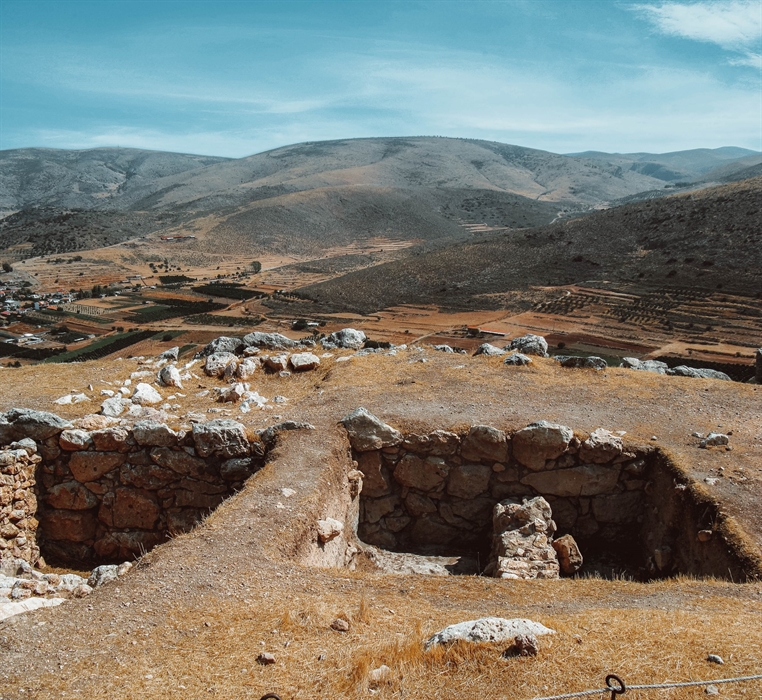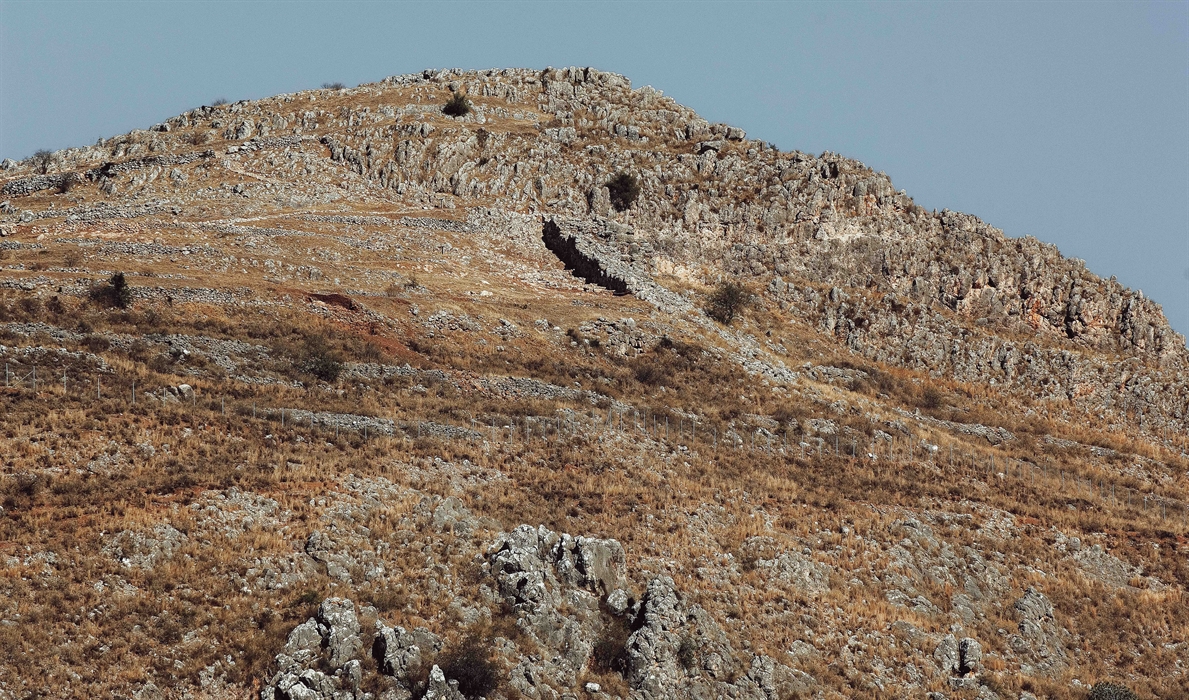Ancient Midea
Although relatively little remains of ancient Midea, it was once the third most important fortified Mycenaean citadel in Argolis -after Tiryns and Mycenae.
Although relatively little remains of ancient Midea, it was once the third most important fortified Mycenaean citadel in Argolis -after Tiryns and Mycenae. We know it was a very significant Mycenaean centre because of the strong "cyclopean" wall which was built to protect the citadel from attack. The fact that the citadel was connected by road to both Tiryns and Mycenae, and had connections with the rich Mycenaean cemetery in neighbouring Dendra, also tells us that it was a major centre. And last but not least, the rich archaeological findings discovered at the site confirm its influence.
These findings tell us that Midea was an administrative and economic centre as archaeologists have uncovered stone seals and, interestingly, a clay seal with a Linear B inscription and showing a lion attacking a bull. More recent excavations have confirmed this, especially the discovery of more vessels and seals with Linear B inscriptions. But ancient Midea was not all admin and finance - it also seems to have had a healthy artistic and religious life as many clay figurines were discovered there, including an impressive wheeled clay figurine of a female deity, along with jewellery, stone and metal utensils, and tools. It was also connected to other centres in the Aegean and the East. Finally, the citadel clearly had considerable engineering prowess as the water system for the city which was connected to the Cyclopean wall was no small feat (there was a similar one in Mycenae).
Midea flourished in the 14th and mainly in the 13th century BC, but its glory came to a sudden end in the late 13th century when the citadel was destroyed by an earthquake and a fire. The skeletons of the earthquake victims have been found, crushed by boulders, in various parts of the site.
The site for the citadel of ancient Midea was chosen wisely and strategically. The 268 m hill is steep and inaccessible from the south side, and as already mentioned, walls were built to protect the remaining three sides. These walls enclose an area of 24,000 sq.m which housed a number of buildings including a Mycenaean "palace". This large rectangular building was destroyed by the earthquake and the fire, but was repaired and used again during the 12th century BC. Archaeologists also found a complex with 15 rooms, and parts of three other buildings on a hill on the south-west slope. The gates of the citadel were opposite each other on the east and west sides of the fortification.
Archaeological work on the acropolis of Midea was begun by the German Archaeological Institute in 1907. The first large excavations began in 1939, and were supervised by the Swedish archaeologist Axel Persson who was also in charge of excavations at Dendra and Ancient Asini. Systematic excavations jointly organised by Greece and Sweden began in 1983.
Did you know that
Summer opening hours for the archaeological site: Monday-Sunday 08:30-15:30 Free entrance.
*Information material drawn from the website of the Ministry of Culture.
Location
Find the destination on the interactive map below.
Categories
Weather
Σχετικό περιεχόμενο χρηστών (UGC)
Ενημερωθείτε για ενδιαφέροντα θέματα γύρω από τον προορισμό μέσα από το περιεχόμενο των χρηστών μας
Discover 7 hidden gems of the Peloponnese
Many of you may have already visited some of the most renowned attractions…
TOP 10 archaeological museums in the Peloponnese
Olympia, Mycenae, Epidaurus, Diros Cave, Ancient Corinth, Messene and…
TOP 10 Castles in the Peloponnese
Castles galore! Mystras, Monemvasia, Palamidi, Methoni, Koroni,…
Newsletters
- About us
- FAQ's
- Map
- Tourism information centers
- Disclaimer
- Sitemap
- Our brand
- Media roum
- Adding your bussiness
- Corporate
- MICE

Peloponnese. Greece beyond the obvious





Design and creation from Cosmote
Marinas and Moorings
Diving centers
Get inspired
- Media gallery
- Blog
- The Peloponnese in the media
- Your feedback
- Users' general content
- Users' local products
- Users' events content
- Ask a local
More
- Accommodation
- Travel agencies
- Restaurants
- Services
- Destinations Map
- Weather
- Public transport
- Events
- Frequently asked questions
- Useful phones
- B2B
- Destination Data
- Contact


